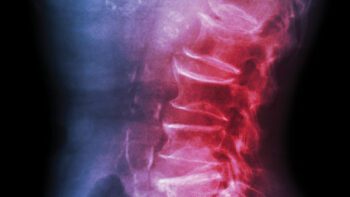
3D printing technology has taken off in the last number of years. This exciting technology has been used to create small toys, machinery, and even an apartment building! 3D printing has been used for the creation of spinal implants as well. Is this simply a passing trend or the direction of the future?
3D Spinal Implants: The Future
In general, spinal implants may be utilized for establishing fusions or getting one bone to heal to another in an ideal, stable position. This allows the spine to be properly aligned, reducing any pressure on the nerves. Unfortunately, fusions do not always occur and are a major cause of pain and disability after failed spine surgeries. Therefore, a major goal of implant design is to both help reestablish the spine’s proper anatomy and to help it fuse in that position.
>>>> Robotic Surgery: What Is It?
3D printing can help achieve both of these goals. By creating a wide variety of heights, angles, and depths, the number of different shapes and sizes for implants is endless. This allows surgeons to use more patient-specific implants to achieve clinical success through ideal anatomic restoration. In most circumstances, the huge number of implant options is all that is needed for a patient. However, there are situations where having a true patient-specific implant is needed.
>>> What Doctors Wish Their Patients Knew About Spinal Fusions
Benefits of 3D Spinal Implants
Complex spinal deformity, tumors, or infection frequently result in significant bony distortion and thus the usual implants are not sufficient. 3D printing technology allows a truly ideal implant to be created to the individual’s circumstance.
Implants can also be 3D printed in ways to assist fusion. Certain metals, such as titanium, are ideal to achieve bony union. In general, an implant needs to roughly mimic the properties of bone in order to heal fully. If the implant is too stiff and rigid, it can indent and settle into bone, thereby losing the spacing and postural correction that was needed to achieve clinical success.
If it is too soft, it simply doesn’t support the weight and can break. 3D printing can be utilized to create the property match, ideally through different architectural models with different metals. Further, 3D printing can allow for implants to have framework to allow for the placement of high amounts of bone graft, which assists in “turning on” the entire fusion process. Lastly, 3D printing allows for the creation of surface porosity to the micrometer. The smaller the surface pores of an implant, the more nooks and crannies that bone can form onto. 3D printing allows for these microscopic roughened surfaces to be created, therefore increasing fusion rates.
>>>> How COVID-19 Affects Spine Health
Final Considerations: 3D Spinal Implants
Despite the benefits, 3D printing currently isn’t needed in every aspect of spine surgery. In most circumstances, having true patient-specific implants can be both costly and unnecessary. The standard set of implants has a wide array of sizes and shapes, offering a fit for almost everybody. Furthermore, the prerequisite CT scan to create the implant requires a radiation dose to the patient. All things considered, 3D printing has huge applications to the current and future goals of spine surgery.
by Colin M. Haines, MD, Spine Surgeon & Director of Research at Virginia Spine Institute and Nate Johnson, Undergraduate Research Fellow at the National Spine Health Foundation



